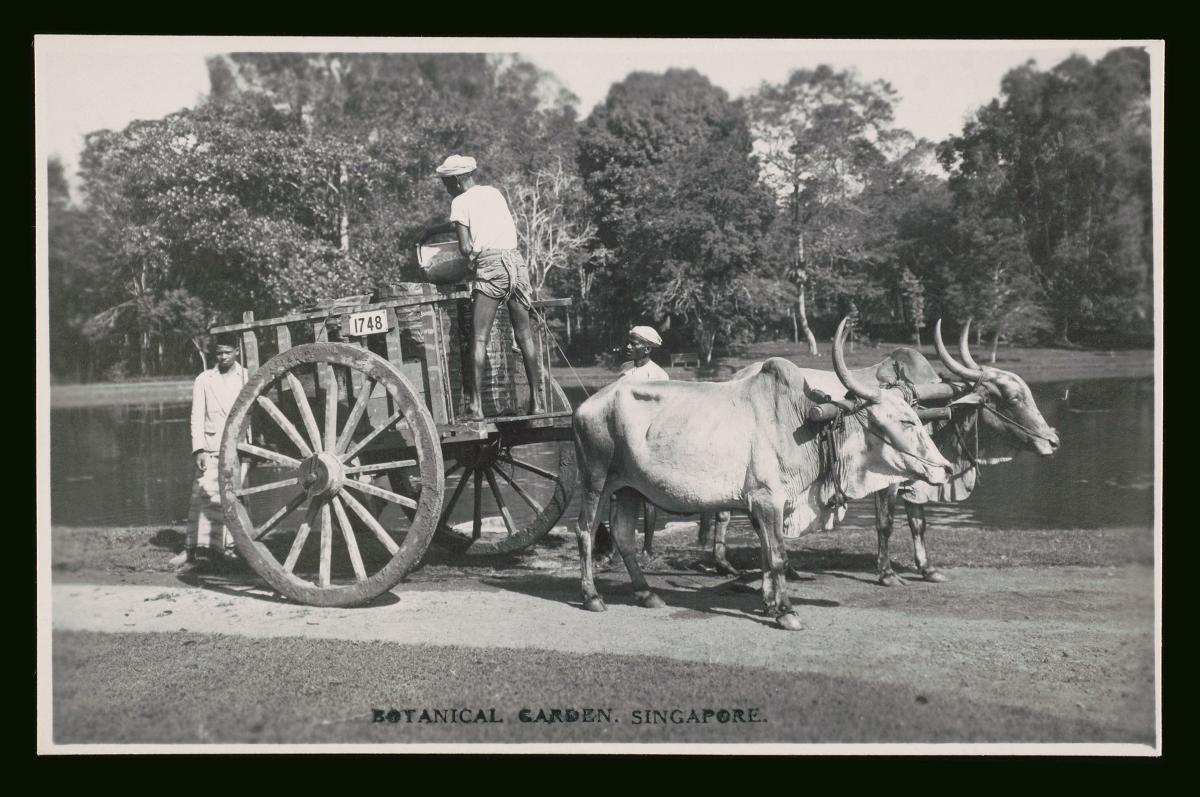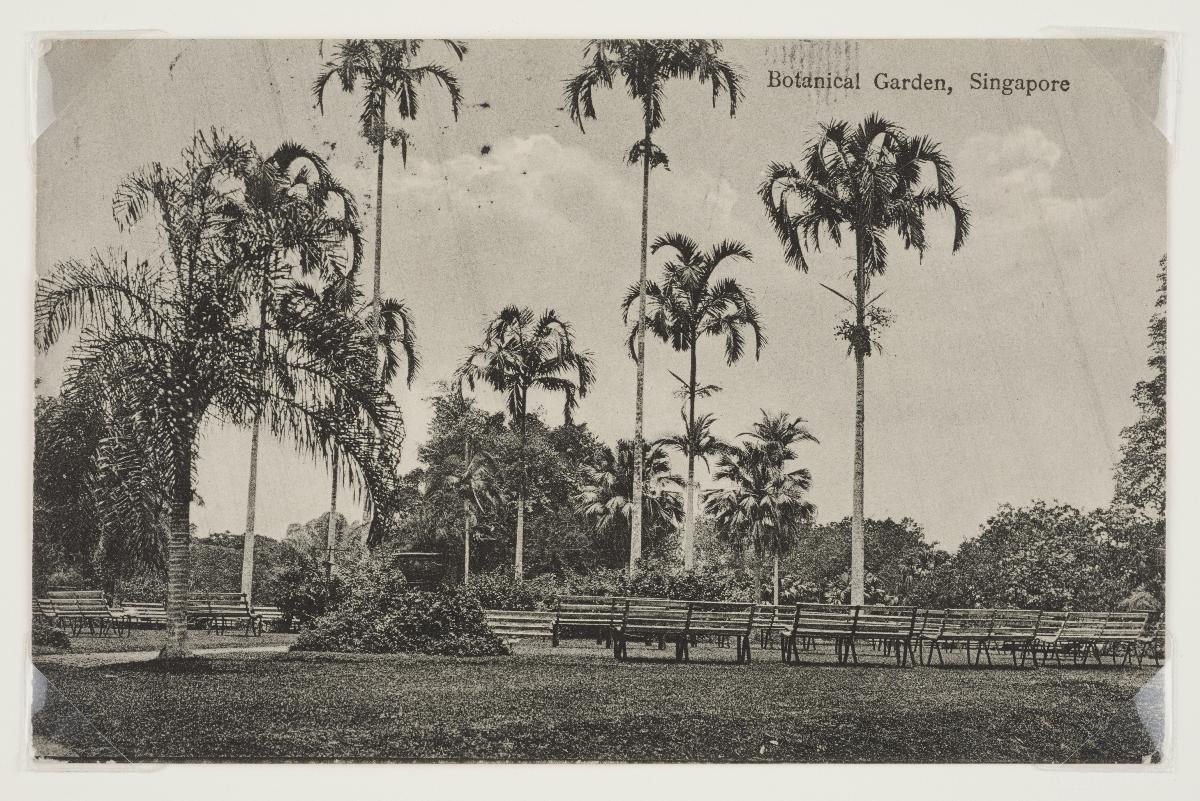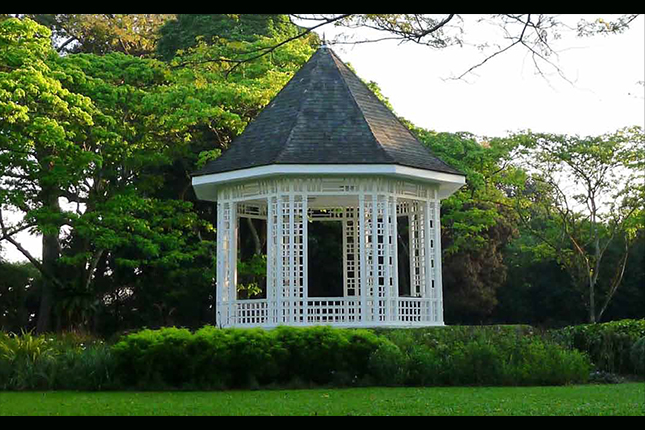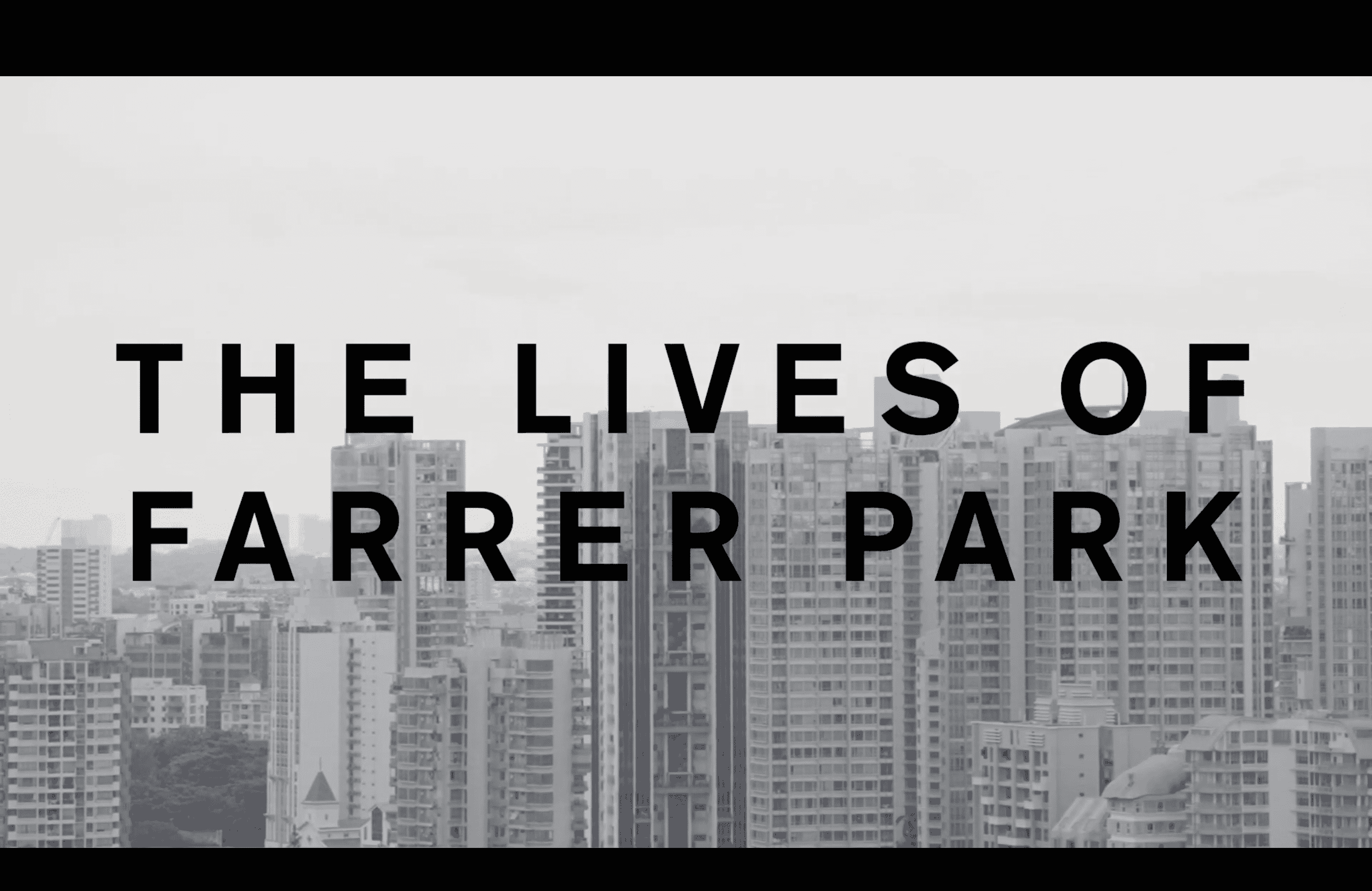This postcard is part of a set acquired by the museum. The collection provides a glimpse into the physical and social landscape of Singapore during the 19th and 20th century which were characterised by European colonialism, the Japanese Occupation, and the post-war years. These postcards also give a glimpse into the type of architecture that was seen in Singapore in those days, as well as the range of activities, businesses, trades, and industries that the people of Singapore were involved in at that time. Some of these postcards still contain the original handwriting of the senders themselves.A Botanical Garden was first started by Sir Stamford Raffles on Government Hill (Fort Canning Hill today) in 1822 to grow cash crops. However, the project was abandoned in 1829 due to the high costs of maintenance and the lack of a full-time director. The current Singapore Botanic Gardens located at Cluny Road was founded by an Agri-Horticultural society in 1859, following the acquisition of 23 hectares of plantation land from wealthy Chinese businessman, Hoo Ah Kay (also known as Whampoa). Management of the Gardens was handed over to the colonial government in 1874. Kew-trained botanists and horticulturists were recruited to administer the Gardens. Henry Nicholas Ridley became its first director in 1888.The Singapore Botanic Gardens is now managed by the National Parks Board. Aside from being a botanical research institution, it is also a public park that is well-loved by both Singaporeans and tourists alike.
















